Though the total area of Penghu isn’t that large, exploring all of it — including its numerous outlying islands — could easily take a couple of weeks. The most remote township accessible by road from Magong City (馬公市) is Siyu (西嶼鄉), and this place alone deserves at least two days to fully appreciate. Whether it’s beaches, architecture, museums, snacks, sunrises or sunsets that attract you, Siyu has something for everyone.
Though only 5km from Magong by sea, no ferry service currently exists and it must be reached by a long circuitous route around the main island of Penghu, with the drive to Siyu’s far end taking a full hour. Siyu Township starts right after the 2.5-km-long Penghu Great Bridge. Many tourists do stop and take photos at the start of the bridge, though it has little to no aesthetic value. More interesting sights await you on the other side.
LITTLE DOORWAY, LITTLE ISLAND

Photo: Tyler Cottenie
Just 2km into Siyu you will be greeted by the Jhuwan (竹灣村) peanut statue, a cute, anthropomorphized peanut sitting on a bench, complete with sunglasses and parasol, waving at tourists. Peanuts are one of the few crops that do well in Penghu’s arid climate, and the Jhuwan area produces a peanut with a pale seed coat, harvested in June and July each year. If you visit during the summer, look for this treat from local vendors.
Just one more kilometer down the road is the intersection for Siaomenyu (小門嶼). Turn right and follow this road until it crosses a short bridge onto a small island, separate from the rest of Siyu. Siaomenyu translates loosely to “Little Island of the Little Doorway” or “Little Doorway Islet.” In the past, the path that took villagers up to the island’s highlands passed through a small gap between columns of rock, similar to a doorway.
Nowadays, this is one of the best places to observe these basalt columns up close and learn about the volcanic origins of Penghu. For a detailed explanation of how the Penghu islands (millions of years older than the island of Taiwan) formed, head over to the Xiaomen Geological Exploration Hall. Here you will find exhibits describing the geology of the nearby land and sea, as well as the fossils of large Ice Age mammals that have been discovered in the Penghu Trench.
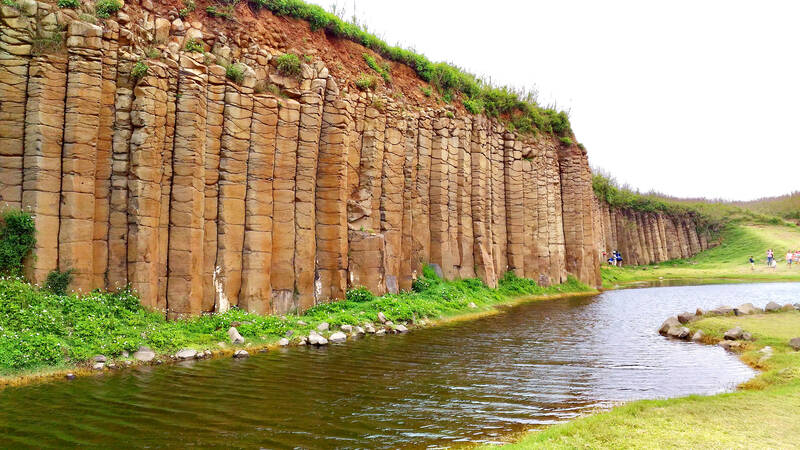
Photo: Tyler Cottenie
The newest exhibit here is a collection of animatronic dinosaurs that seem to serve no other purpose than to attract visitors to Siaomenyu. Fossils of these dinosaurs have not been found in Taiwan or Penghu, and indeed won’t be found as the land masses did not form until well after these dinosaurs went extinct, so their exhibition here is both anatopic and anachronistic. However, if you’ve got young children with you, the entertainment value is worth the low price of admission (NT$30, half-price for students and seniors) and even if you don’t, the other exhibits are still worth seeing, and it is a great place to escape the heat.
After visiting the museum, follow the path away from the village and explore the rest of the island on foot. Abandoned vegetable gardens protected by walls made of stacked coral rocks occupy much of the middle of the island, while the coastal route leads to a shady pavilion with a great view of the ocean. Along the coast are the basalt formations you learned about in the museum, including one spot (Whale Cave) where they have partially collapsed, leaving a gap that is shaped like a whale when viewed from the right angle.
IN THE HEART OF SIYU
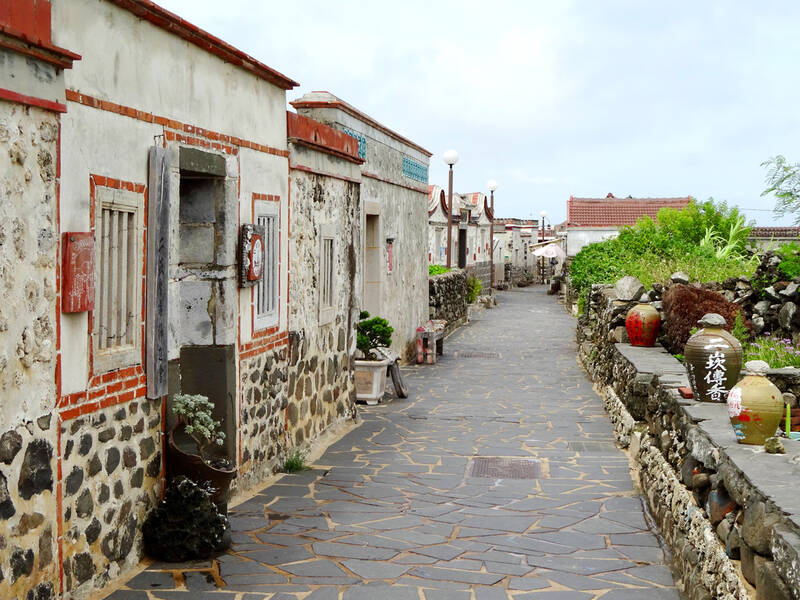
Photo: Tyler Cottenie
If the basalt on Siaomenyu isn’t photogenic enough for you, there is plenty more to be seen as you head further south in Siyu. The coastline behind the Dachih Village (大池村) fishing harbor features towering columns of basalt. When the lava that formed the Penghu islands started cooling, it contracted evenly, naturally forming a web of hexagonal cracks and creating these spectacular columns. This is the best place to observe the columns if you want to avoid the crowds, as the area is undeveloped and few tourists make it here.
From the harbor, simply start walking along the coast. Alternatively, take the concrete road heading north from the harbor into the cemetery, turn left at the fork, and then continue until you see a path on the left leading down to the coast to reach the far end of the basalt group. Unless it’s high tide, you can walk back to the harbor from here.
The coastline behind the fishing harbor in Sichih Village (西池村) is quite similar, with the added visual contrast of abandoned aquaculture ponds in the ocean. More people tend to visit this area, however, so be mentally prepared for the Instagram crowd.
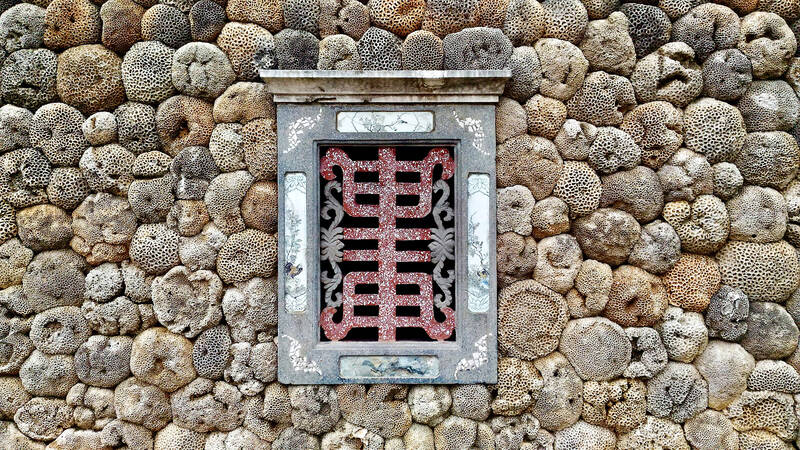
Photo: Tyler Cottenie
To the east of here in Erkan Village (二崁村) lies the Daguoye (大?葉) columnar basalt group, the most photographed and heavily promoted of all. It is very easy to access and has a reflective pool of water below it which can enhance the scale of the columns. However, if you’ve already seen the basalt in Dachih or Sichih, you could easily give this one a pass.
The other major attraction in Erkan Village is the historic village center, where you can see a mix of restored and semi-dilapidated coral homes. Before modern building techniques were introduced to Penghu, most homes were of this style: handpicked coral rocks were brought back to the village and painstakingly stacked to form the walls of a house, with stone windows and standard roof tiles completing the exterior. Some of the exterior walls are now whitewashed, which fills in the deeper cracks between the coral rocks, but leaves many of the coral’s intricate patterns still visible.
The village is becoming more and more touristy, and the decor less and less traditional, but it is still a must-visit for the remarkable preservation of these traditional homes. While there, be sure to try a peanut-filled glutinous rice cake. Freshly made every day and served on a green leaf, this delicious snack is only made in Erkan.
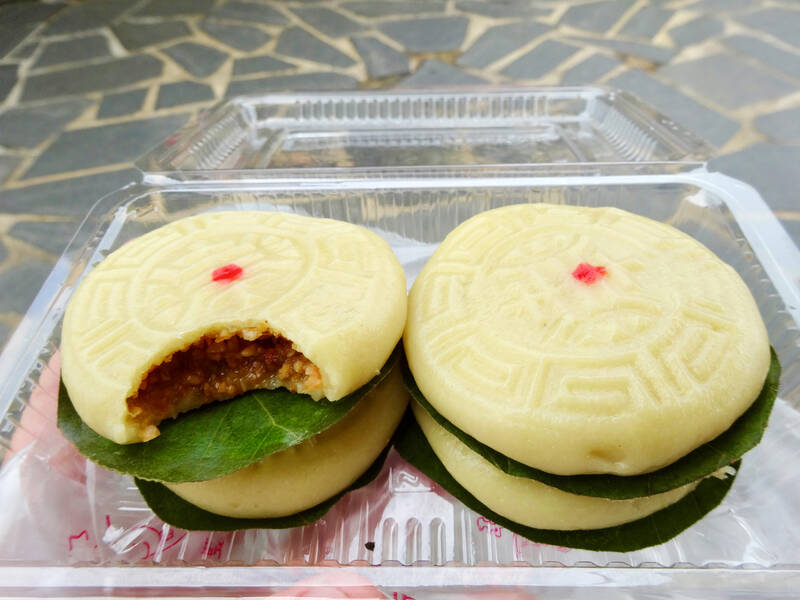
Photo: Tyler Cottenie
THE SOUTH
When you finally make it down to the southern tip of Siyu, there’s not much left to do but enjoy the ocean views. Several Qing-era structures give commanding views of the surrounding sea, including the Siyu East Fort and Siyu West Fort (be sure to visit between 8am and 5:30pm), and the Yuwengdao Lighthouse (漁翁島燈塔, open 9am to 6pm). This lighthouse dates back to 1874 and its name comes from the old name for Siyu, which translates to “Old Fisherman’s Island.” For the best sunset view in Penghu, head over to the grassland just outside the lighthouse.
If you arrive down south earlier in the afternoon, don’t miss the opportunity to visit one of Penghu’s best beaches and the author’s personal favorite: the Neian Recreation Area, located just beyond the Neian Village (內垵) center, on the north side of the island. There are toilets and showers, as well as shady pavilions right above the water. The sand is fine and soft, and the shallow slope of the sea floor makes it ideal for swimming.
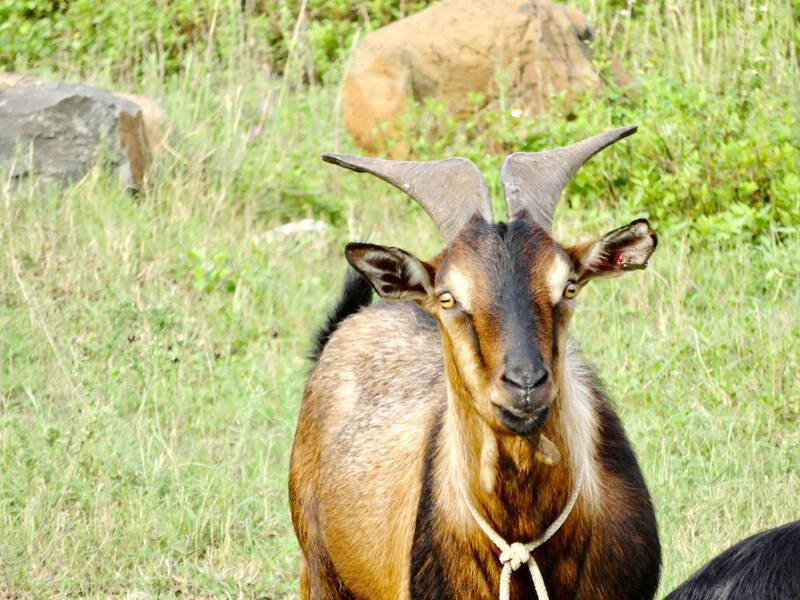
Photo: Tyler Cottenie
Whether you go for a swim here, or just sit in the pavilions and enjoy the sea breeze, you will feel like you’ve escaped to your own private corner of the world. The beautiful green slope behind the beach isolates you from the sights and sounds of human settlement, and there is an unobstructed view over the Taiwan Strait all the way to the horizon. Being surrounded by so much blue and green on a sunny summer day with only the sound of the waves as company is a wonderful experience, and may just be the highlight of your visit to Siyu.
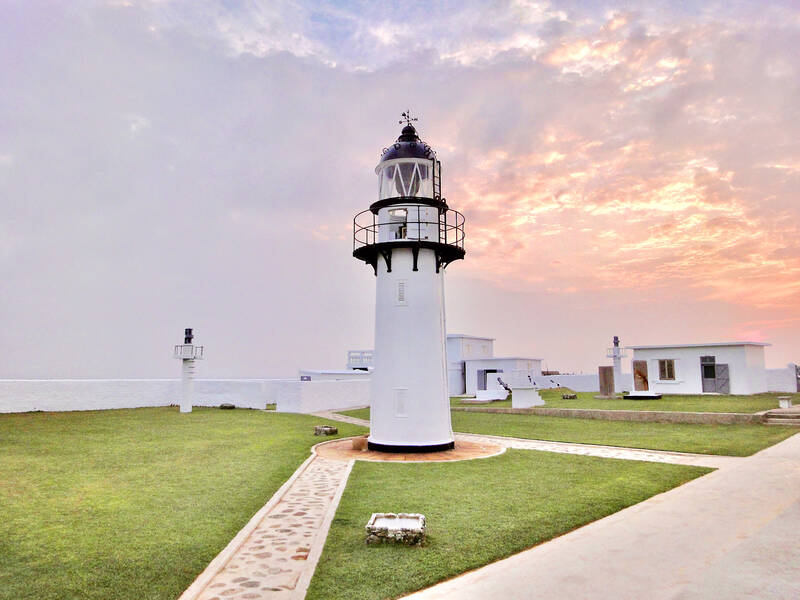
Photo: Tyler Cottenie

Following the shock complete failure of all the recall votes against Chinese Nationalist Party (KMT) lawmakers on July 26, pan-blue supporters and the Chinese Communist Party (CCP) were giddy with victory. A notable exception was KMT Chairman Eric Chu (朱立倫), who knew better. At a press conference on July 29, he bowed deeply in gratitude to the voters and said the recalls were “not about which party won or lost, but were a great victory for the Taiwanese voters.” The entire recall process was a disaster for both the KMT and the Democratic Progressive Party (DPP). The only bright spot for
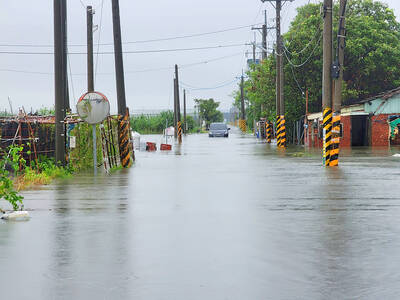
Water management is one of the most powerful forces shaping modern Taiwan’s landscapes and politics. Many of Taiwan’s township and county boundaries are defined by watersheds. The current course of the mighty Jhuoshuei River (濁水溪) was largely established by Japanese embankment building during the 1918-1923 period. Taoyuan is dotted with ponds constructed by settlers from China during the Qing period. Countless local civic actions have been driven by opposition to water projects. Last week something like 2,600mm of rain fell on southern Taiwan in seven days, peaking at over 2,800mm in Duona (多納) in Kaohsiung’s Maolin District (茂林), according to
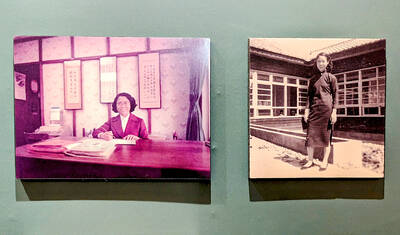
Aug. 11 to Aug. 17 Those who never heard of architect Hsiu Tse-lan (修澤蘭) must have seen her work — on the reverse of the NT$100 bill is the Yangmingshan Zhongshan Hall (陽明山中山樓). Then-president Chiang Kai-shek (蔣介石) reportedly hand-picked her for the job and gave her just 13 months to complete it in time for the centennial of Republic of China founder Sun Yat-sen’s birth on Nov. 12, 1966. Another landmark project is Garden City (花園新城) in New Taipei City’s Sindian District (新店) — Taiwan’s first mountainside planned community, which Hsiu initiated in 1968. She was involved in every stage, from selecting
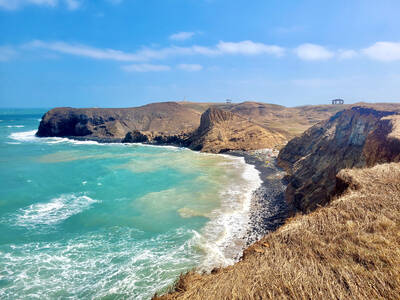
The great number of islands that make up the Penghu archipelago make it a fascinating place to come back and explore again and again. On your next trip to Penghu, why not get off the beaten path and explore a lesser-traveled outlying island? Jibei Island (吉貝嶼) in Baisha Township (白沙鄉) is a popular destination for its long white sand beach and water activities. However, three other permanently inhabited islands in the township put a unique spin on the traditional Penghu charm, making them great destinations for the curious tourist: Yuanbeiyu (員貝嶼), Niaoyu (鳥嶼) and Dacangyu (大倉嶼). YUANBEIYU Citou Wharf (岐頭碼頭) connects the mainland